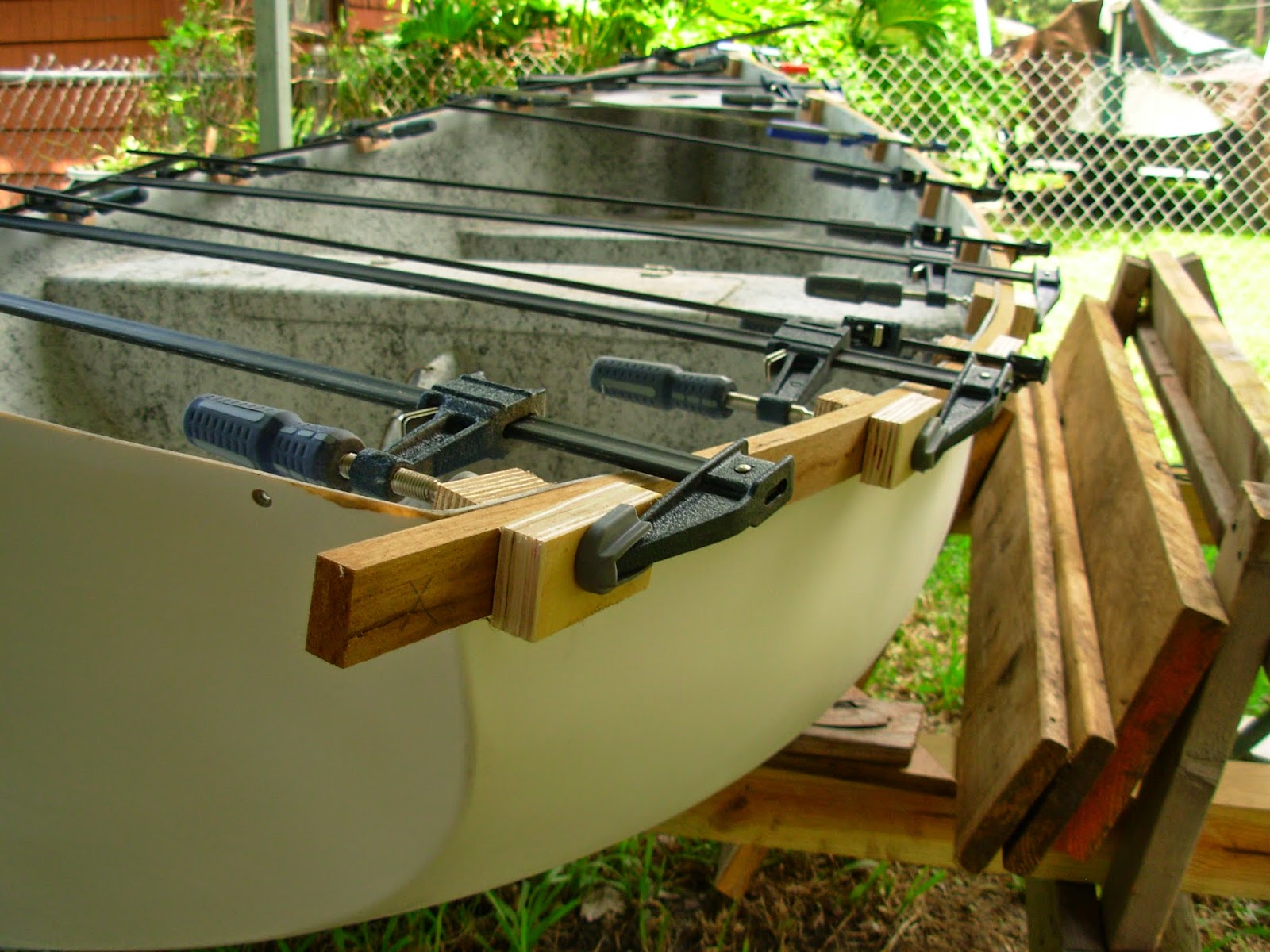For Sunday, August 24th, I continued on the brightwork fabrication and dry-fitting - the weekend's goal. Picking up where I left off the previous day, I focused on dressing up the transom with just a bit of teak accent. The blocks will be secured with #6 stainless steel wood screws and finish washers, will hide the bronze screws securing the aft thwarts, and will be drilled to allow a length of rope knotted from the inside (below the thwarts) which will serve as a means of carrying the dinghy when launching.
The port side....I'll call it the "transom accent"...
...and the starboard transom accent.
After finalizing the transom accents, I turned my attention to finishing the bow thwart. This task was the obvious next step for me, and once dry-fitted, it would allow me to create the inboard rails for the dinghy. I removed the clamps from the block as well as the tape, prying off the cured epoxy squeeze-out. Using the random orbital finish sander, I cleaned up the top and bottom surfaces, transferred the cardboard template to the block, and then cut out the bow thwart on the band-saw.
The rough-shape bow thwart - sorry for the blurry photo. Taking the inboard hull angle on the bevel, I transferred the port and starboard angles to the bow thwart and began hand-shaping.
After surprisingly little time shaping the thwart, I had achieved a good fit. The bow thwart will eventually be secured with 1" #8 bronze wood screws, pre-drilled and recessed, and to be covered with the outboard rub rail. For now, I temporarily secured the thwart with my crafty hot glue gun.
Once I had the bow thwart in place, I turned my attention to fabricating the inboard rails, starting with the port side. I measured for length between the aft and bow thwarts, and added about a 1/4" for expected trim waste. For now, I just focused on shaping the forward end of the rail. I had to account for the angle of the hull and how the rail intersected the thwart - this required a little bit of patience between each rail.
The port rail, above, and the starboard rail, below.
Once I had the inboard rails rough-shaped and ready to fit in place, I fired up the steambox to make the wood more supple and just easier to bend into position, and placed both port and starboard rails in the steambox for 45 minutes. Leaving one in the steambox as I worked the other, I began with the port side.
I bent on each inboard rail first, and then came back with the outboard rail. Below, a view from the stern showing all rails clamped into their future homes.
The inboard and outboard rails are in a very rough condition yet, and will undergo shaping and styling in the next phase of the project.
Finally, a view looking aft showing rails, thwarts and transom rail.
Total Time: 4.5 Hrs.










































